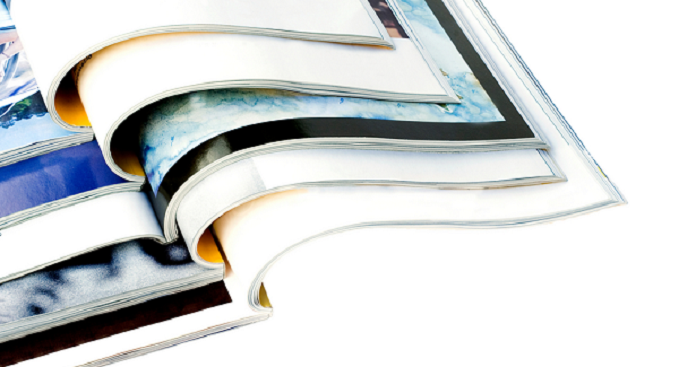
While so much of the world is focusing on making digital content look as professional and exciting as possible, there’s really no substitute for beautifully designed and printed physical documentation. That tactile pleasure of holding something real in your hand is not something to be overlooked, and with the right printing solution, images and text can have an elegance and visual appeal that’s difficult for digital content to beat.
To achieve a level of quality that matches or exceeds what is possible for a digital equivalent, you may need to go beyond what is capable from a basic office printer. When you really need to make an impact with your printed output, adding a little X-factor is possible thanks to finishing options.
According to research by Microsoft, the average attention span of humans has waned since the turn of the century, from 12 seconds down to just 8 seconds in 2013. It’s no coincidence that such a shift has happened at this time in history, with the study noting that digital lifestyles have decreased our ability to stay focused for prolonged periods.
From a business point of view, to get your message across in the face of potential customer apathy, you really need something special to grab attention. Let’s take a look at some printer finishing options that can help you produce better documents and images, and cut through the digital competition.
Finishing options to streamline production
Before your documents and imagery ever make it to the hands of your customers, obviously they have to be designed and produced by your organisation. When you are dealing with particularly large volumes, the printing itself may not be the most time-consuming factor; trimming, punching and stacking are all aspects that can hold up the process.
Fuji Xerox have a range of solutions to help make this system easier to manage.
- Booklet makers. Rather than just delivering your marketing information to consumers on a flat sheet of paper, sometimes a booklet is a better alternative. We’ve already mentioned concerns with modern attention spans, so if you need to convey a reasonably large amount of information it may be best to separate it into bite-sized chunks across a number of pages. Finishers with booklet making capability can ease a workload that would be very high if done manually.
- Punches. When a booklet isn’t going to be enough to carry all of your important information and imagery, maybe you need to step up to a binding solution. Both comb and loop binding require the creation of many holes at the edge of your document, which would clearly require a lot of effort if done manually, one sheet at a time. Having a punch as part of your finishing solution is another feature to smooth out the production process.
- Stackers. For high volume printing jobs to move as quickly as possible, it’s important to eliminate any stops and starts wherever you can. Also, being able to walk away from the production process confident that there aren’t going to be any interruptions can allow you to devote your time to other tasks. That’s where a high capacity stacker addition to your finishing solution can be of great benefit, reducing the time spent emptying output trays and collecting all of your documents into easily manageable stacks.
Deliver the feel you want with different media types
You may not realise it, but most modern printers and multifunction devices are capable of printing on many different types of paper. With that in mind, selecting the right medium to best serve your particular needs can make a big difference to the end product.
In commercial printing, there are two main options as far as paper type is concerned – coated and uncoated. Coated paper has been made with a surface sealant which doesn’t allow the ink to soak into the paper, meaning images in particular appear much more crisp. Typically, magazines will be printed on glossy coated paper, although dull and matte options are also available.
Uncoated, as you might expect, is free from any type of sealant, meaning the ink is absorbed into the paper stock until dry. For documents that require a bit more texture, or something of a rustic appearance, uncoated paper is a good bet.
On top of the type of media you’re using, the right paper thickness is another decision to be made. For certain high volume jobs such as advertising materials, having a fairly light stock can be more favourable from an environmental standpoint. Should you be interested in producing documents that need a higher quality feel, however, printing on a slightly thicker paper can make a surprising difference.
At Fuji Xerox, we have the equipment and know-how to help with all of your paper finishing needs. Speak to us today about how your print and imaging production process can be improved.
